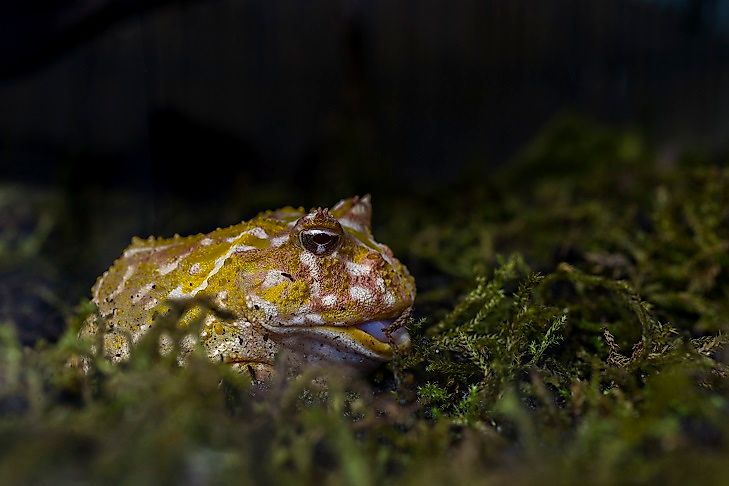Native Amphibians Of Brazil

Brazil is one of the countries housing some of the richest varieties amphibian fauna. The country is home to almost 1000 species representing 13% of the world’s known species. Most of the amphibians are found in the Amazon forest, Atlantic Forest, Pantanal, and Cerrado. The state of Sao Paulo has the highest number of Amphibians in the country at 28% and in the world at 4% of the world’s amphibians. Brazil is home to several native amphibian species, a few of which are looked at below.
Sao Paulo Caecilian
The Sao Paulo Caecilian, Luetkenotyphlus brasiliensis, is an amphibian species in the Family Siphonopidae. This species is found in the State of Sao Paulo in Brazil and the eastern part of the Missiones province in Argentina. Sao Paulo Caecilian is highly evolutionary distinct because of its 50 million years of evolutionary history. It can grow up to 50 centimeters in length and a slim body width of 10 millimeters. It has round but acute snout. The mouth is set back from the snout which enables it to barrow the soil easily. The nostril can be seen from the top of the snout while the eyes are not visible externally. Their reproduction mode is not well known. However, the female cells which develop into eggs grow to a diameter of 2 millimeters before ovulation can take place. Sao Paulo Caecilian is listed as a threatened species. However, there are no defined threats to this species.
Goeldi's Frog
Goeldi's Frog, Fritziana goeldii, is a frog species in the Family Hemiphractidae, and it was named in honor of Emil Goeldi, a Swiss Zoologist. The species is endemic to the State of Rio de Janeiro, Sao Paulo, and Espirito Santo. Goeldi's Frog is found in forests from sea level to 3,300 feet above the sea level. They sit on vegetation above the ground in bromeliads. The female carries eggs in a pouch and release the tadpoles in the bromeliads. Goeldi's Frog is threatened by the loss of habitat loss through the various human activities including clearing land for cultivation and settlement.
Parma Climbing Salamander
The Parma Climbing Salamander, scientifically called Bolitoglossa paraensis, belongs to a group of salamander species in the Plethodontidae Family, and it is mainly found in Brazil’s lowland Amazonian rainforest areas. The species occur in bushes and on tree trunks in the forest understory. Parma Climbing Salamander conducts respiration through the skin and tissues lining the mouth. They have nasolabial groove lined with glands between the nostril and upper lip which enhances the chemoreception. The adult Parma Climbing Salamander has four limbs with toes on the forelimbs. They lay their eggs on land which hatches into an adult body form. Deforestation and habitat loss are the main threats to Parma Climbing Salamander.
Amazon River Frog
The Amazon River Frog, scientifically known as Lithobates palmipes, is a terrestrial frog found in slow moving water bodies such as rivers, ponds, and flooded forests. It is a small nocturnal frog measuring between 50 and 120 millimeters in snout-to-vent length. This species is green with a gray dorsal surface speckled with black. A black strip cuts from the snout to the eye and above the tympanum. Amazon River Frog is a delicacy, especially in the Southeastern Venezuela. Poaching and clearing of habitat are major threats to the species.
Native Amphibians Of Brazil
| Native Amphibians of Brazil | Scientific Name |
|---|---|
| Sao Paulo Caecilian | Luetkenotyphlus brasiliensis |
| Goeldi's Frog | Fritziana goeldii |
| Parma Climbing Salamander | Bolitoglossa paraensis |
| Amazon River Frog | Lithobates palmipes |
| Brazilian Two-Lined Caecilian | Rhinatrema ron |
| Spix's Horned Tree Frog | Hemiphractus scutatus |
| Yellow Cricket Tree Frog | Dendropsophus microcephalus |
| Rio Madeira Poison Frog | Adelphobates quinquevittatus |
| Cranwell's Horned Frog | Ceratophrys cranwelli |
| Cayenne Stub-Foot Toad | Atelopus flavescens |











